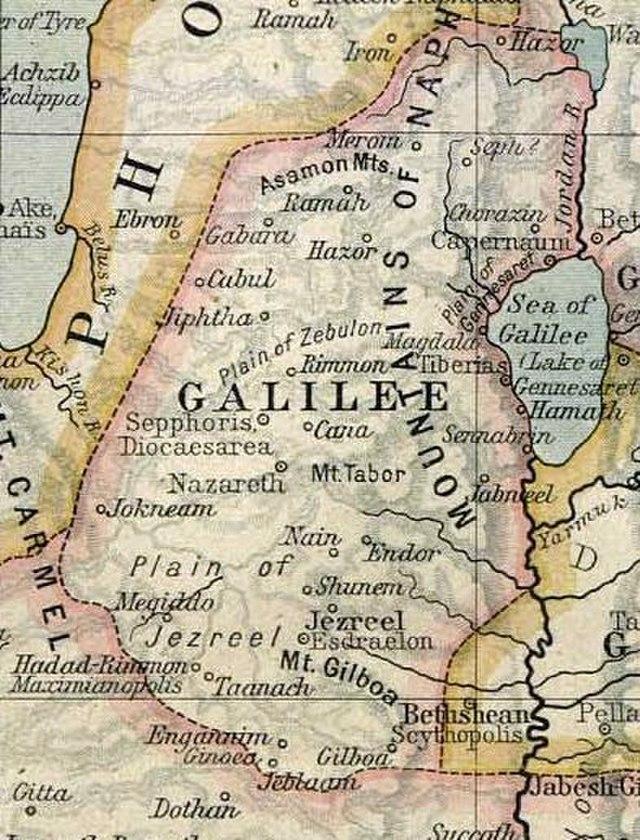The Mission of the Twelve
Then he went about among the villages teaching. 7 He called the twelve and began to send them out two by two, and gave them authority over the unclean spirits. 8 He ordered them to take nothing for their journey except a staff; no bread, no bag, no money in their belts; 9 but to wear sandals and not to put on two tunics. 10 He said to them, “Wherever you enter a house, stay there until you leave the place. 11 If any place will not welcome you and they refuse to hear you, as you leave, shake off the dust that is on your feet as a testimony against them.” 12 So they went out and proclaimed that all should repent. 13 They cast out many demons, and anointed with oil many who were sick and cured them.
New Revised Standard Version Bible: Catholic Edition, copyright © 1989, 1993 the Division of Christian Education of the National Council of the Churches of Christ in the United States of America. Used by permission. All rights reserved.
What to do with this educator’s commentary
This commentary invites you as a teacher to engage with and interpret the passage. Allow the text to speak first. The commentary suggests that you ask yourself various questions that will aid your interpretation. They will help you answer for yourself the question in the last words of the text: ‘what does this mean?’
This educator’s commentary is not a ‘finished package’. It is for your engagement with the text. You then go on to plan how you enable your students to work with the text.
Both you and your students are the agents of interpretation. The ‘Worlds of the Text’ offer a structure, a conversation between the worlds of the author and the setting of the text; the world of the text; and the world of reader. In your personal reflection and in your teaching all three worlds should be integrated as they rely on each other.
In your teaching you are encouraged to ask your students to engage with the text in a dialogical way, to explore and interpret it, to share their own interpretation and to listen to that of others before they engage with the way the text might relate to a topic or unit of work being studied.
Structure of the commentary:
See the general introduction to Mark.
Text & textual features
Characters & setting
Ideas / phrases / concepts
Questions for the teacher
The world in front of the text
Questions for the teacher
Meaning for today / challenges
Church interpretations & usage
The World Behind the Text
See general introduction to Mark.
The World of the Text
Text & Textual Features
Mark uses a number of phrases and words which give urgency to his writing. In this passage he uses the word ‘and’ several times; moving the events quickly, like a child’s writing… “and then and then and then.”
Characters & Setting:
The disciples and Jesus
Mark’s Gospel has a clear geographical structure. Jesus stays in the region of Galilee for the first 9 chapters of the Gospels, then moving to Jerusalem. This story, in chapter 6, takes place during Jesus’ Galilean Ministry.
Setting:

Ideas/Phrases/Concepts:
Any form of good news would have been told orally during the lifetime of Jesus as most people couldn’t read. Sharing the message of the ‘Good News’ in the form of storytelling allowed for maximum audience engagement; it also required storytellers, witnesses who themselves had been transformed by the message.
Jesus sent them out by two
The twelve were a circle of 12 men who were among, but not the sum total of, the disciples. Within this group of 12, Peter, James and John had special roles. The 12 seems to have had a symbolic role, representing the 12 tribes of Israel of the Old Testament.
The twelve are called and sent out in twos with authority (Mk 6:7), to teach, preach, heal and send out evil spirits’ in His name. The sending out in twos is reminiscent of a reference to Deuteronomy 17:6 and 19:15, where Israel was taught that at least two witnesses were required to establish the truth of a matter. To bring authority to the message of good news, are two voices required?
Take nothing but a staff
The 12 are instructed to travel light, with a lack of provisions. This makes them more reliant on the kindness of strangers to survive. They were to trust in God and be dependent on each other. One tunic, not two further illustrated their poverty.
They are to take nothing but a ‘staff’….
Two allusions are possible here: Moses used his staff to instruct the Israelites during their exodus; as the primary tool of the shepherd it could also confirm Jesus’ position as ‘the good shepherd’. More practically, a staff could also provide protection during the journey.
Wear sandals on their feet…
Just as their ancestors did in the desert (Ex 12:11).

And, ‘if any place will not welcome you and they refuse to hear you, as you leave, shake off the dust that is on your feet as a testimony against them.’
According to Jewish tradition, when a Jew returned from a foreign land they were to ‘shake off the dust’ so as not to add gentile soil onto Jewish land. By shaking the dust from their sandals those towns that rejected Jesus were left behind.
At this stage of Jesus’ ministry the disciples weren’t yet ready, they were still a ‘work in progress’ but Jesus sends them anyway knowing that action was the foundation of mission. They had watched Him, spent time in His company and learnt from His example. This experience was preparation for what was to come, when Jesus was no longer with them.
These twelve were to be God’s instruments in conquering evil, expanding the mission of Jesus, developing the activity of the Early Church.
Mark’s instruction makes clear to his community that missionary disciples must imitate Jesus in their activity. Preaching to those who were willing to listen, healing the sick and releasing the afflicted. And if people don’t offer welcome? Move on.
Questions for the teacher:
The World in Front of the Text
Questions for the teacher:
Meaning for today/challenges
The reason Jesus was successful was that the lives of the people who encountered Him were truly transformed by their encounter. They were changed because they believed that Jesus was the Messiah, Son of God, spoken about in the Hebrew Scriptures, made present to them. The disciples were mostly uneducated, many un-named, some fishermen, others tax collectors and even a centurion. But for all of them their authority came from their divine call, received from Jesus. They were able to deliver His message with confidence because they trusted Jesus and He sent them. In the same way we are called into a relationship with Jesus, strengthened by our encounter with His saving presence. As we learn more about Jesus through engagement with the Gospels, we learn to articulate how what we know has the power to transform our lives.
Jesus prepared them for possible rejection, just as he had experienced rejection in His own town (Mk 6:2). However, he told them to ‘not linger with those who did not welcome them, to shake off the dust that is on your feet as testimony against them.’ Recalling the parable of the sower and the seed, the message of good news would be given to all; some would understand, but some would not. In Mark’s reminder of Jesus’ suffering and rejection, we too recall that in our own times of suffering and rejection we can turn to Him: He feels our pain and we can be strengthened by this.
Sending the disciples out in pairs reflects and predicts the activity of The Kingdom.
In this way Jesus was preparing them for the work of missionary discipleship, to “Go and make disciples of all nations.” As disciples of our time, we are challenged to ‘travel light’ as we share stories of our lives transformed. We also stand confidently with others who do the same, each testimony confirming a community faith, this is church.
Dom Helder Camara, the saintly Brazilian bishop of the dispossessed said, ‘Sisters and brothers, watch how you live. Your lives may be the only gospel your listeners will ever read.’
The strength of our delivery is the power of our own witness to Jesus’ transforming power in our lives. This Scripture reminds us of God’s desire to ‘call us’ through baptism to be disciples for all nations.
Church interpretation and usage
This Gospel story is effective for Liturgies that focus on the theme of Missionaries, Missionary Work, Discipleship or Leadership.
Liturgical Usage
The text is the Sunday Gospel on the fifteenth Sunday in Year B. It is accompanied by Amos 7: 12-15 and St. Paul’s Letter to the Ephesians 1:3-10.
These Readings focus on the theme of ‘being called’ to go and make disciples of all nations.
